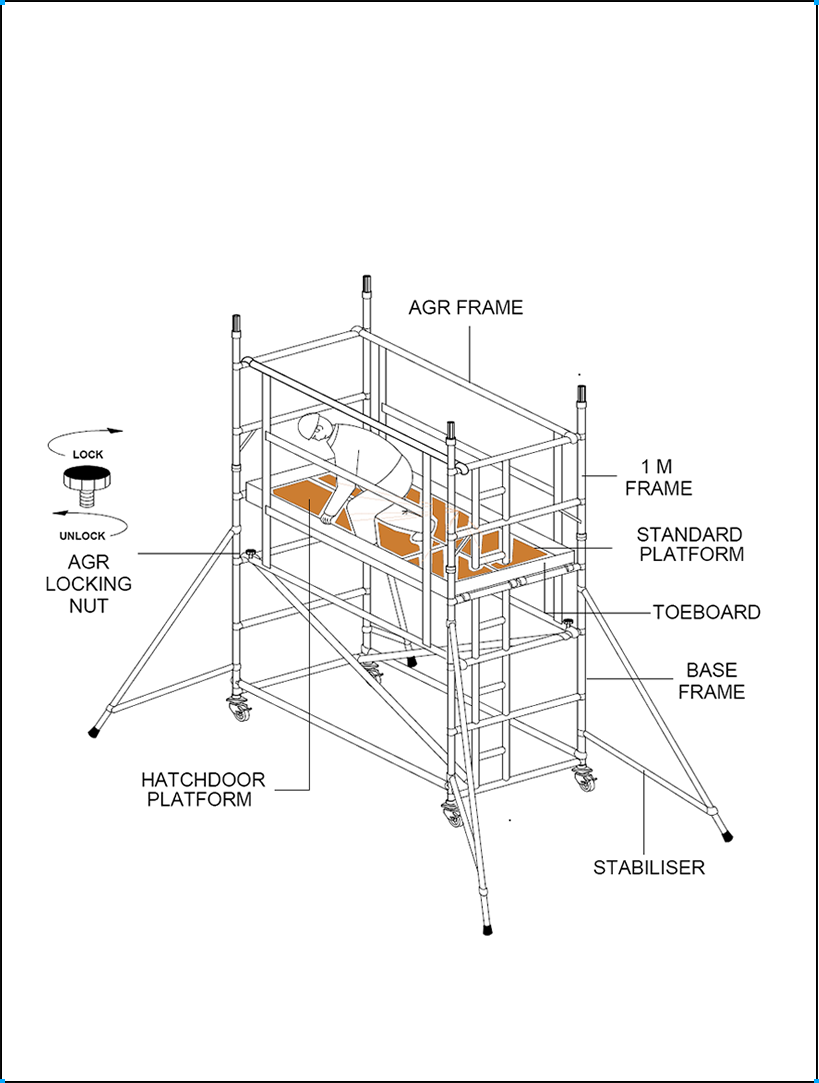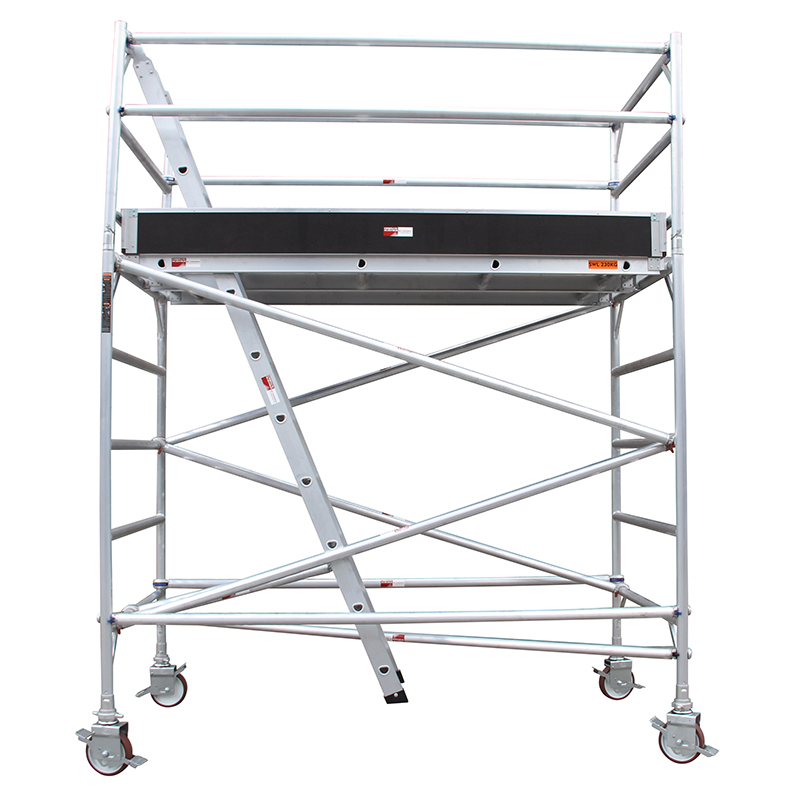The Future of Scaffolding: Patterns and Advancements
Scaffolding Rules: What You Required to Know ============================================
Understanding scaffolding guidelines is essential for worker safety in construction. Laws set by OSHA cover design, weight capacity, and examinations. Different systems like modular and put on hold deal convenience for projects. Regular inspections and fast corrections guarantee stability. Educating for assembly and fall defense is essential. Recent modifications in legislations may influence demands. Keep educated for a complete grasp of scaffolding security.
Significance of Scaffolding Laws
Recognizing the value of adhering to scaffolding regulations is vital in guaranteeing the security of employees and the public on building sites. Security conformity within the building sector is not only a vital demand yet additionally an ethical responsibility to shield people from damage. By adhering to strict scaffolding policies, companies can properly manage risks associated with working at heights, heavy lots, and possible dangers.
Danger administration plays a crucial function in applying scaffolding laws. emergency scaffolding Recognizing prospective risks, examining their likelihood and prospective influence, and taking proactive procedures to mitigate these risks are fundamental action in guaranteeing a safe workplace. Adherence to laws aids in decreasing crashes, injuries, and fatalities related to scaffolding tasks. https://kingstonuponthamesscaffolding.co.uk/index.html It additionally promotes a culture of security awareness amongst workers and stresses the importance of following correct treatments and guidelines.


OSHA Specifications for Scaffolding
The Occupational Safety and Wellness Management (OSHA) has set robust requirements for scaffolding to guarantee the security of employees in the building market. These laws are in area to avoid crashes and make certain that scaffolding systems are set up and used properly.

OSHA's safety standards for scaffolding cover facets such as the layout, building and construction, and placement of scaffolds, as well as the appropriate use of scaffolding tools and drop protection actions.
According to OSHA requirements, scaffolds should be able to support their very own weight and a minimum of four times the optimum planned load without failure. They need to also be furnished with guardrails, midrails, and toeboards to prevent falls. Routine inspections, typically done by a competent person, are essential to recognize and resolve any possible hazards immediately.
Adherence to OSHA guidelines is crucial for building firms to keep a secure working environment and stay clear of expensive charges. By complying with OSHA's security standards for scaffolding, companies can shield their employees from crashes and create a culture of security on building websites.
Sorts Of Scaffolding Equipments
Different scaffolding systems are utilized in the building and construction market to offer temporary support for employees and materials at elevated elevations. 2 usual types of scaffolding systems are modular scaffolding and put on hold scaffolding.
Modular scaffolding, additionally known as system scaffolding, is preferred due to its flexibility and simplicity of assembly. It consists of pre-engineered parts that can be rapidly linked and gotten used to match different project demands. Modular scaffolding is fit for jobs that call for frequent reconfiguration or where accessibility requires may change throughout construction.
On the other hand, suspended scaffolding is a system that hangs from the top of a framework rather than being supported from the ground. It is typically used for tasks like home window cleaning or outside building maintenance. Put on hold scaffolding gives unrestricted accessibility to the exterior of a structure and is excellent for jobs where ground-based scaffolding is not practical or impossible. Both modular scaffolding and suspended scaffolding play vital duties in making sure the security and performance of construction jobs at raised elevations.
Scaffolding Inspection Needs
Checking scaffolding is an important aspect of guaranteeing construction website security and conformity with guidelines. The regularity and requirements for scaffolding assessments are essential to preserving a safe work environment. According to laws, scaffolding should be evaluated by a proficient person prior to each job change and after any event that could influence its structural stability, such as extreme weather or influence from tools. Furthermore, formal evaluations need to be performed at regular intervals, typically weekly, to assure ongoing compliance with safety requirements.
Compliance with assessment demands is crucial to prevent accidents and assure the stability of the scaffolding framework. Any kind of infractions identified during inspections need to be immediately dealt with and remedied to reduce prospective dangers to employees. Usual infractions include missing or harmed parts, poor bracing, improper planking, and overloading. Routine and comprehensive examinations, along with speedy rehabilitative actions for any type of non-compliance, are necessary to keeping a safe scaffolding system on construction websites.
Training and Qualification for Users
To assure the safe use of scaffolding on building sites, proper training and certification for individuals are important. Certification requirements for scaffolding customers vary depending upon the location and type of scaffolding being used. In a lot of areas, users are required to finish a training program that covers subjects such as scaffold setting up, evaluation, safe usage, and drop security. These training programs are developed to ensure that individuals using scaffolding have the needed understanding and skills to work securely at heights.
Certification needs might additionally consist of showing efficiency in putting up and taking apart scaffolding, recognizing weight capabilities, and knowing just how to recognize prospective dangers. Companies are commonly responsible for guaranteeing that their employees receive the ideal training and certification before allowing them to use scaffolding on site. Normal refresher courses may be essential to keep qualifications as much as date and strengthen secure techniques. By mandating training programs and qualification needs, authorities intend to minimize the risk of mishaps and injuries connected to scaffolding usage.
Current Modifications in Scaffolding Rule
Current adjustments in scaffolding laws have brought about brand-new safety demands that are shaping the building and construction market.
These guidelines are affecting how scaffolding is utilized on work sites and are influencing safety and security procedures to see to it workers are much better safeguarded.
It is vital for those in the building field to stay educated and certified with these advancing laws to keep a secure workplace.
New Safety Requirements
Rigorous safety protocols have been carried out as component of the current modifications in scaffolding laws to enhance workplace security for building workers. Safety and security training has actually come to be a centerpiece, assuring that workers are appropriately prepared to deal with scaffolding devices and operate at heights safely.
These new needs mandate that all workers receive detailed security training before engaging in any scaffolding activities. Additionally, enforcement procedures have actually been reinforced to assure conformity with these security protocols. Inspections are being conducted more frequently, and severe repercussions are in area for non-compliance.
Impact on Building Industry
With the current changes in scaffolding laws, the building sector is experiencing a substantial change towards heightened safety and security requirements and increased liability.
These modifications have actually had a notable influence on labor performance within building and construction jobs. The need to follow stricter policies has actually brought about an extra structured and safety-oriented method to scaffolding use, which subsequently has actually influenced the general effectiveness of labor on construction sites.
Additionally, the upgraded regulations have introduced expense ramifications for construction firms. While making sure conformity can bring about enhanced preliminary costs because of the application of more secure scaffolding systems, in the long term, it can lead to decreased costs related to accidents, injuries, and lawful problems, ultimately benefiting both workers and companies.
Often Asked Inquiries
Can Scaffolding Rules Vary From State to State in the Us?
Yes, scaffolding laws can vary from one state to another in the United States. These differences may consist of variants in safety procedures, examination demands, training standards, and acceptable materials. It is necessary to comprehend and follow the details laws in each state.
Are There Particular Weight Limitations for Scaffolding Systems?
Weight limitations on scaffolding systems are vital for safety. These constraints vary based upon the sort of scaffolding and lots ability. Complying with weight standards guarantees architectural integrity and reduces the risk of crashes, highlighting the value of safety and security precautions.
Just How Frequently Should Scaffolding Equipments Be Evaluated for Security?
Scaffolding systems need to be checked for safety and security frequently to guarantee compliance with policies and prevent accidents. The regularity of assessment relies on elements such as usage, ecological conditions, and manufacturer suggestions, normally varying from once a week to monthly. Scheduled upkeep is important.
Exist Any Particular Needs for Educating on Specialized Scaffolding Equipments?
Specialized training for scaffolding systems involves specific qualification requirements to assure safe procedure. Training must cover the one-of-a-kind functions and threats of specialized systems, stressing correct setting up, usage, and taking down procedures for optimum safety conformity.
Are There Any Penalties for Non-Compliance With Scaffolding Regulations?
Non-compliance with scaffolding regulations can result in prospective penalties and enforcement activities. Failure to abide by these guidelines might lead to expensive repercussions, lawful problems, and endangered safety measures, stressing the relevance of strict conformity.
Conclusion
To summarize, adherence to scaffolding guidelines is essential for making certain the safety of workers and preventing accidents on building sites.
OSHA requirements detail the requirements for proper scaffolding use and examination. Different kinds of scaffolding systems have specific guidelines that have to be complied with.
Training and accreditation are important for users to recognize just how to safely work with scaffolding. Stay updated on any kind of recent changes in scaffolding regulations to preserve conformity and support security requirements.